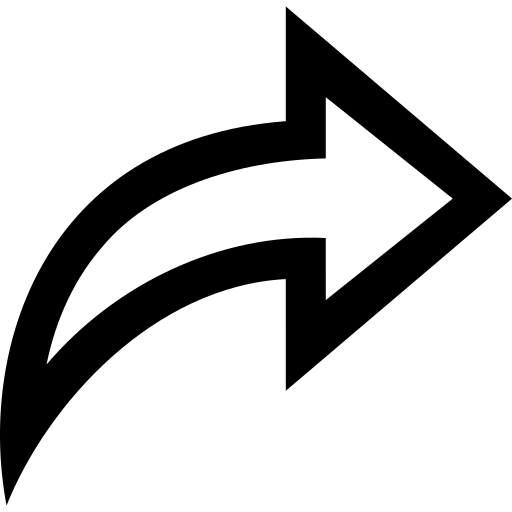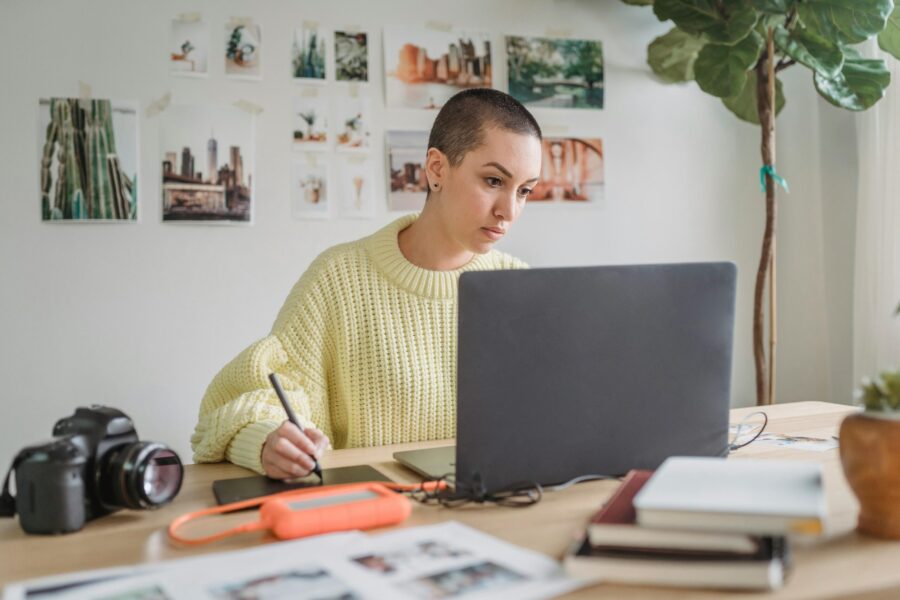The art world is entering a new creative epoch, shaped by Artificial Intelligence (AI). AI-generated art emerges from a human-machine collaboration where artists define parameters and AI assists in realizing novel artworks, often using generative tools like Adobe Firefly or Midjourney that interpret text prompts based on patterns from vast datasets. This fusion of AI and artistic expression opens new creative avenues while challenging traditional art notions.
The impact on the art ecosystem is profound and ambivalent. AI can catalyze new creativity but also disrupts existing art business models. Its influence extends to art creation, marketing, complex copyright issues, and the creative economy’s evolving landscape. Galleries and auction houses may benefit from faster research and market analysis, yet artists face potential displacement by AI content. A key development is the potential “democratization” of art, as AI tools lower barriers to artistic creation for those with limited traditional skills. This expanded access, however, creates tension with economic challenges for established artists and businesses pressured by rapid, cost-effective content generation. While human-machine collaboration is emphasized, the nature and value of this partnership, especially regarding authorship and originality for the emerging “prompt artist,” remain central to current debates.
Historical Background
AI’s roots in art extend to early algorithmic and generative art experiments. In the 1950s-60s, artists and mathematicians used early computers for geometric patterns, laying groundwork for generative art. Key figures include Vera Molnár, who from 1968 used programming for randomly generated works based on her “Machine Imaginaire” concept, and Manfred Mohr, who turned to algorithmic art in the late 1960s, culminating in his 1971 “Une esthétique programmée” exhibition, the first museum show of entirely computer-calculated art.
Harold Cohen’s AARON project, begun in the late 1960s, became a foundational AI art system. AARON, based on Cohen’s artistic knowledge coded into a rule-based system, evolved from abstract drawings to colored, figurative depictions, raising early questions about machine autonomy and creativity through exhibitions at institutions like LACMA and the Tate Gallery.
The 2010s saw a technological shift with advances in machine learning, especially Generative Adversarial Networks (GANs), enabling more realistic image creation. Google’s DeepDream (2015) popularized AI aesthetics. A market turning point was the 2018 Christie’s sale of “Edmond de Belamy” by Obvious for $432,500, catapulting AI art into the mainstream. Recent accessibility surged with text-to-image models like DALL-E (2021), Midjourney (2022), and Stable Diffusion (2022). This marks a shift from artists like Cohen programming explicit rules to AI models learning from data, yielding emergent results. The “AI artist” role has diversified from programmer to “prompter-curator,” influencing AI art’s creation, perception, and value, and continuing Cohen’s early philosophical inquiries.
Fact Check and Current Prospects
AI’s integration into art is a rapidly growing economic force. The generative AI art market, $0.43 billion in 2024, is projected to hit $2.51 billion by 2029 (CAGR ~42%). Broader estimates for AI in art vary, with some projecting up to $40.4 billion by 2033. North America leads, with Asia showing strong growth, driven by AI startups, communities, exhibitions, and demand from various industries. The “ArtTactic and Hiscox Art and AI Report 2024” notes 40% of collectors expect more AI art purchases, with auction sales peaking in 2023. GANs, VAEs, and text-to-image models dominate, with cloud deployment and machine learning holding significant market shares.
Copyright remains a central debate. The U.S. Copyright Office requires human authorship, making purely AI-generated works uncopyrightable and raising issues about training AI on copyrighted data without consent, leading to lawsuits. Authenticity, originality, and ethical concerns like algorithmic bias, devaluation of human skills, and environmental impact are also intensely discussed.
Predictions for the next 5-10 years include continued market growth (AI art potentially 5% of contemporary art market by 2025), ongoing democratization, more human-AI collaborations, and integration with Metaverse/VR/AR. Ethical and copyright debates will shape regulation. Development is influenced by technological advances (AI model quality, computing power), economic factors (R&D investment, cost efficiency, new revenue streams like NFTs, market saturation risks), and social aspects (digital affinity of younger generations, changing perceptions of creativity, demand for transparency).
This creates opportunities (new tools, efficiency, market access, restoration applications) and challenges (copyright issues, artist displacement, devaluation of traditional skills, ethical dilemmas). The “AI art gold rush” shows market enthusiasm despite unstable legal/ethical foundations. A generational gap exists, with younger collectors more receptive. AI also mirrors societal biases from training data, demanding critical engagement.
Prospects and Predictions per Art Genre
AI is reshaping individual art genres:
- Painting: AI fuels debates on style, enabling hyperrealism and abstraction. It assists with studies and composition, though reception varies from acknowledging new aesthetics to dismissal as “illustration.” Globalization via AI tools accelerates style exchange, risking homogenization.
- Sculpture & Installation: AI offers new 3D modeling and design optimization, aiding material selection (potentially sustainable ones) and fabrication via robotics, especially for public art. Generative design allows complex, interactive installations like Refik Anadol’s data-driven works.
- Photography: AI profoundly challenges photography’s truth claim. Editing and generation tools are ubiquitous, leading to a “crisis of truth” in photojournalism. Image provenance technologies like “Content Credentials” are gaining importance.
- Digital Art & NFT: AI directly impacts NFT creation, valuation, and personalization. “NFT 2.0” focuses on utility and AI integration. AI art is entering Metaverses, though speculative risks and regulatory inconsistencies persist.
- Performance & Live Art: AI aids script generation and acts as an interactive stage collaborator (visuals, soundscapes). Algorithmic dramaturgs and hybrid online/offline formats may emerge, supported by new funding models.
- Urban Art: AI tools assist mural design, but AI-generated “Urban Art” raises authenticity concerns. AI could be a design aid or a source of generic art, potentially shifting urban art towards commercialization.
- Ceramics, Glass & Mixed Media: AI generates complex patterns, aids material optimization, and quality control. An “Artisan AI Symbiosis” may emerge, augmenting craftsmanship, but requiring transparency about AI use and potentially shifting definitions of “handmade.”
Recommendations for Action, What to Do?
Proactive engagement is crucial for navigating AI in art:
- For artists: View AI as a tool to expand creative possibilities and develop a distinctive voice. Experiment with tools, learn prompt engineering, combine AI with traditional techniques, and understand ethical/copyright implications.
- For Galleries, Curators, Art Entrepreneurs: Explore innovative uses of AI (personalized experiences, virtual tours, NFTs) while taking an educational role. Address ethics, ensure transparency, promote dialogue, and develop new AI-assisted business models. Educating clients on AI art’s processes and value is key.
- Best Practices for All: Foster collaboration between artists, technologists, and researchers. Stay informed on technological, legal, and market developments. Pilot projects can test AI integration. The “human curation layer,” vision, selection, ethical consideration, and narrative framing, is vital for adding value beyond algorithmic output. Proactive engagement with ethical dilemmas is a prerequisite for sustainable success.
What to Look Out For
Navigating AI art requires awareness of success criteria, pitfalls, and strategic choices:
- Key Success Criteria: Maintain high aesthetic/conceptual quality beyond novelty; the human element in refining AI results is crucial. Establish clear market positioning to define a niche and value proposition. Effective networking is vital for visibility and collaboration.
- Potential Pitfalls: Avoid over-dependence on AI leading to loss of style or skills. Copyright infringements are a major risk. Market saturation with generic AI art could devalue genuine work. Ethical missteps (bias, lack of transparency) can damage reputations. Be aware of AI’s technical limitations (“hallucinations”) and the “black box” nature of some models.
- Partner and Technology Selection: Choose partners based on ethical standards and artistic vision. Select AI technologies based on artistic needs, user-friendliness, customization, and ethical data sourcing (open-source models can be advantageous). Carefully review terms of service. Consider diverse funding models, including newer ones like crowdfunding or AI-focused funds, with due caution. Specializing in niche areas where human skill offers an advantage can be a strong strategy.
Certain mistakes and assumptions can undermine credibility in AI art:
- Common Mistakes/Fallacies: Believing AI is a “magic button” (it requires skill and input). Ignoring complex copyright/ethical issues. Presenting minimally altered AI images as wholly original. Trusting AI-generated information without verification. Inputting sensitive data into public AI tools.
- False Assumptions: AI completely replacing human artists (more likely a tool/collaborator). All AI art being the same (a wide spectrum exists). Using AI is “cheating” (sophisticated use requires skill). AI art having no value (market interest suggests otherwise, though debates continue).
- Maintaining Credibility: Be transparent about AI use in the creative process. Use ethically trained AI tools where possible. Ensure significant human creative contribution. Avoid “solutionism” (AI replacing deep engagement). Continuously educate oneself on evolving guidelines and laws. Respect human artistry and avoid uses of AI that devalue it.
Outlook
AI has irrevocably entered the art world, offering a powerful tool for innovation and democratization while raising profound ethical, legal, and economic questions. The market grows as all art genres engage with AI’s possibilities and implications. This is not an endpoint but a new frontier. Human creativity, critical thinking, and ethical responsibility remain paramount. The future likely involves a profound intertwining of human and AI capabilities, leading to hybrid art forms. AI challenges the art world to articulate its values, human labor, originality, concept, aesthetics, or market demand, potentially leading to more diverse valuation models. The interface of art and AI will remain a crucial and exciting dialogue, continually redefining creative boundaries.









